The new V&A gallery Europe 1600-1815 is devoted to the growing magnificence of European artistic taste through the Baroque and to the Romantic period.
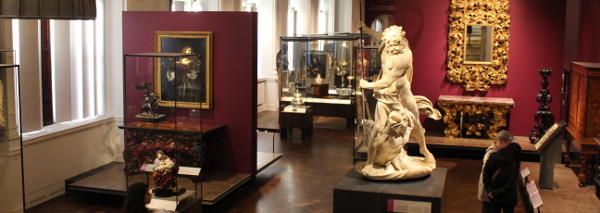
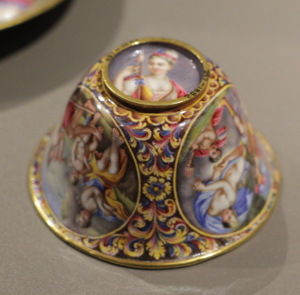
Above: Cup, Copper painted in enamels
with gold mounts, Switzerland, 1700-1720
As you can imagine, there's a lot of splendour and style on display. The new gallery has been a while in the making but it shows off the beauty and craftmanship of the age (in a way, similar to the British Museum's Waddesdon Bequest). We have furniture, fashion, sculpture, ceramics and even a whole room on display. The royals and the rich spared very little expense.
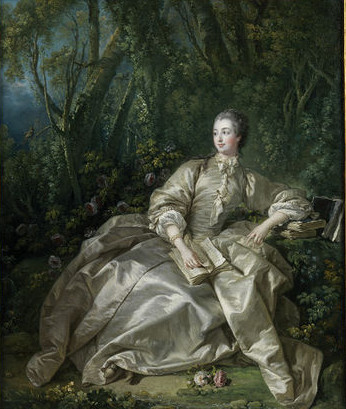
Some of the things on display are so finely created and so astonishing that they need to be seen to be believed.
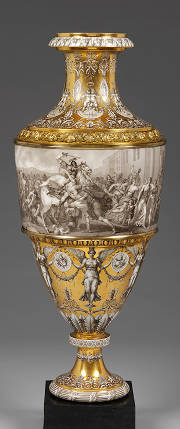
Right: Vase with the Abduction of the Sabines, made at
Dihl and Guérhard's porcelain factory,
about 1790-95, France
In his television series Civilisation, Kenneth Clarke considered these years as a peak of high civilisation, and it is hard to disagree. If you like gold, silver, fine art and beautiful display, the V&A is for you, and this gallery in particular.
You can watch (what appears to be all of) Civilisation on YouTube.
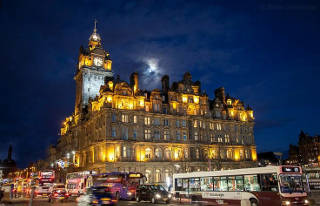
Above: What was the North British Hotel, Edinburgh.
"The Old North"
In Edinburgh a few months ago, I referred to the big hotel at the east end of Princes Street as the North British. I was corrected: it's The Balmoral now (well, I've been away a while).
Balmoral is a Gaelic word meaning "majestic dwelling", and I think that would certainly apply to this impressive hotel. Of course, the name "Balmoral" has royal connotations today as well. Gaelic itself is appearing on all sorts of signs in Scotland now, even though most Scots have no idea how to pronounce much of it. However, the original language of North Britain (this is all well before the country "Scotland") was not Gaelic but Brittonic (or Brythonic) a "celtic" language shared with the inhabitants of the rest of the island of Britain; a language that would become Old Welsh.
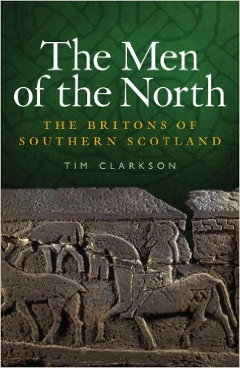
I recently read Tim Clarkson's book Men of the North. Clarkson tries to shed as much light as possible on the various North British Kingdoms that sprang up after the Roman's retreat from the island. This is a very hard period of time to unravel but he does a good job with the extremely unreliable and fragmentary evidence available.
Most of this evidence is much later than the time it purports to describe. It can also be as much about the time it was written as the time it covers. Thank goodness for Bede, a Northumbrian who wrote the best and closest account we have of this early period.
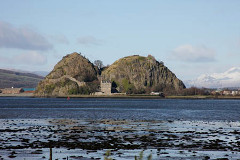
Above: Dumbarton Rock.
One of the longest surviving British Kingdoms in the north was Alt Clut, based at the mouth of the Clyde and Dumbarton Rock. It was only in 870 that the rock was abandoned when it was attacked and sacked by the Vikings. The center of power was moved to Govan. In the 11th Century, the Kingdom of Strathclyde was absorbed by the growing power of the Scots :
Around 1050, the kingdom of Strathclyde was conquered by the increasingly powerful Scots. King David I founded a new diocese in Glasgow in 1114, and the old church at Govan was gradually abandoned. As for the Britons themselves: "They were no longer Cumbri but had become 'Scots' like their new political masters. Inevitably, as time wore on, the deeds of their forefathers began to fade from memory. Soon only the sculptured stones remained, a handful of monuments scattered across the land, to bear mute witness to a forgotten people." (Tim Clarkson)
The above quote is from The Govan Stones, a blog post from Jo Woolf describing a visit to Govan Old Parish Church. The church contains a surprising number of very ancient standing stones and sculptures from this early period. Tim Clarkson linked to this from his own website devoted to the Britons of Strathclyde, Early Medieval Govan.
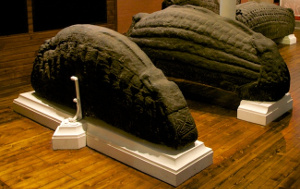
Above: the enigmatic "hogback" stones.
Who would have thought things like these were hidden away here? Some of the oddest artifacts are the "hogback" stones - are they norse? No one really knows what they were made for, or what they represent. But as Jo Woolf says :
Built to withstand the wrath of giants, they look as if their whole purpose is to keep something in! You get a sense of someone being locked within the earth, safe from all kinds of unspeakable evil.
A good reason to visit Govan; something I never thought I'd want to do.
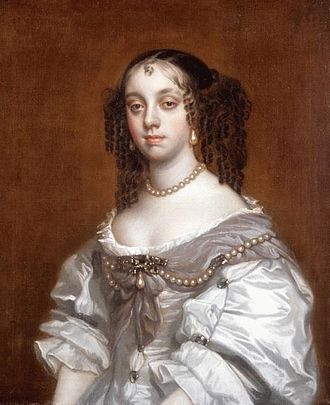
Sir Peter Lely, Catherine of Braganza, 1665
In the early 1660's, King Charles II married Catherine of Braganza, daughter of the Portugese King. This is an episode covered in Peter Ackroyd's latest book in his History of England series, Civil War, a book I have almost finished. It's a good and straightforward read as usual.
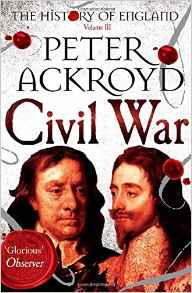
As Ackroyd notes of the occasion, Charles and Catherine met in Portsmouth for the first time and it sounds like a delicate moment :
One of Catherine's first requests was for a cup of tea, then a novelty. Instead she was offered a glass of ale.
She was going to have to put up with a lot worse. Charles was a complete philanderer as Ackroyd further notes :
Pepys calculated that he had at least seventeen mistresses even before the restoration.
Such was the current nature of the aristocratic estate.
Blair Worden in The Spectator review of Ackroyd's Civil War book is less than impressed. He thinks it is all a bit predictable, with little or nothing new to say, and less analysis. Fair enough. It does tell the same stories many might know from previous histories, but Ackroyd can still engage. Fundamentally, the stories might not be fresh, and there might be little "analysis", but this is not the goal of his history here. Good stories bear re-telling.
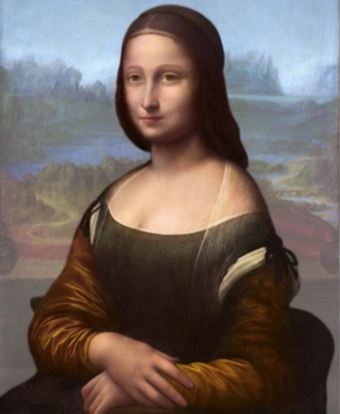
The BBC have made an excellent television program with Andrew Graham-Dixon about the mystery of Leonardo's most famous painting, the Mona Lisa, known in France as La Gioconda.
In the Secrets of the Mona Lisa, Graham-Dixon travels to Florence, Singapore, Oxford and Paris to investigate the existence of a second portrait, one that more closely matches early eyewitness accounts (including a drawing Raphael made).
Right: Reconstruction of the painting Cotte finds underneath the Mona Lisa.
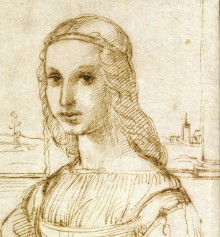
The discoveries made by French scientist Pascal Cotte using a scientific technique he invented called Layer Amplification Method are intriguing. A hidden painting underneath the painting we know. Is this the real Lisa Gherardini?
Left: Raphael's drawing of the original Mona Lisa? ('Young Woman on a Balcony’).
Jonathan Jones in the Guardian is sceptical :
Cotte has forgotten that Leonardo was a genius. Of course he did not do anything so banal as paint someone else on top of his portrait of a Florentine woman. What he did was so much more fascinating. He worked on this portrait until the face of a real person was transformed into a myth.
Well, who knows? But all are agreed: this is fascinating stuff. A great television programm with Andrew Graham-Dixon superb as our guide and interpreter. Highly recommended.



